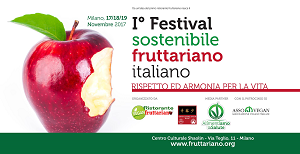With the support of:

IX Edition,,it,GROWTH ROUTES to FEED LIFE,,it 30/11 – 2/12 2018: PERCORSI di CRESCITA per NUTRIRE la VITA
Art
The Daily

EDITION 2018
| M | T | In | T | F | S | S |
|---|---|---|---|---|---|---|
| « Dec | ||||||
| 1 | 2 | 3 | 4 | 5 | 6 | 7 |
| 8 | 9 | 10 | 11 | 12 | 13 | 14 |
| 15 | 16 | 17 | 18 | 19 | 20 | 21 |
| 22 | 23 | 24 | 25 | 26 | 27 | 28 |
| 29 | 30 | 31 | ||||




